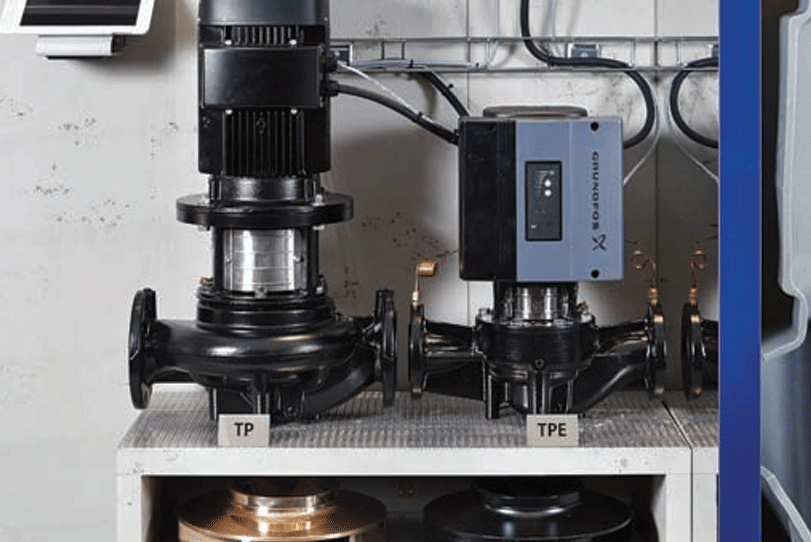In the past few decades, India has witnessed unprecedented growth in the real estate sector. Today, no economy or sector is sustainable without the intervention of technology and innovation. With changing landscape and growing demand for smart solutions, the need of the hour is to introduce highly energy efficient solutions which can address unique challenges faced by the industry.
When it comes to construction of large commercial hubs and office spaces, it is recommend to use highly efficient water solution systems, so that maximum energy can be saved. When it comes to centralised cooling solutions, district cooling is an efficient and environment friendly utility service. This comes without the need for a bulky refrigeration equipment or the surrounding noise which is gaining momentum at present. The solution can use alternative and renewable energy sources, resulting in more than 50 percent reduction in power consumption. Under favourable circumstances, district cooling offers significant cost, comfort, and operational efficiency gains as compared to other technology-based counterparts if any.
According to the Energy Sustainability Journal, District cooling technology offers highly efficient processes leading up to more than 40 percent of energy efficiency improvements and 20 percent lifecycle cost savings compared to conventional air conditioning systems. The high sustainable option of district heating and cooling results from its great potential to reduce the need for separate electricity production. One crucial aspect for ensuring sustainable cooling solutions for the local real estate market is to develop concepts that provide clear evidence of being resource efficient in the long run and which demonstrates good environmental performance at low operational costs.
The discussion on energy efficient solutiozs is inadequate without addressing the climate change issue. Considering the urgency to shift towards energy efficiency and to ensure that the required Sustainable Development Goals are met, exploring alternatives in this field is a natural choice. A successful district cooling system is more energy-efficient than other local alternative solutions and profitable for society in the long run. Strong government interventions and energy standards have further pushed HVAC (heating, ventilation, and air conditioning) companies to explore sustainable innovations that can address current HVAC requirements. A major differentiating factor for cooling solutions in buildings is the geographical location and climatic condition of the country across the year. The combination of cooling demand can support the environment friendliness of the solution.
Smart technology for smart solutions in water usage
Modern families living in individual homes or apartments depend on reliable, uninterrupted supply of water. Offices, malls, hospitals, hotels, airports and other commercial buildings as well use large volume of water everyday. The standard norm for domestic water usage in India is 135 litres per capita per day prescribed by the Central Public Health and Environment Engineering Organization. According to the India Energy Security Scenario 2047, the number of residential air conditioner (A/C) units may increase seven-fold by 2037 as compared to 2017. Also, the related energy consumption might increase four times in the next two decades, according to India’s National Cooling Action.
Therefore, measuring and modernising water consumption patterns and techniques for domestic as well as commercial spaces need to be addressed using smart solutions. Installation of efficient water pumping solutions like MAGNA and TPE circulator pumps, AHU (Air Handling Unit) coil pumps for air conditioning in buildings, HVAC system control, automation and optimisation by Grundfos could be an ideal solution. To achieve clean energy, climate change and water related sustainability goals, companies dwelling in water solutions need to constantly evolve with cutting edge product designs to not only suffice customer’s needs but also to address the existing energy demands with a sustainable approach.
Climate savvy approach
In 2019, Rajkot in Gujarat became the first city in India to introduce District Cooling under the ‘Smart City’ developmental plan, hence demonstrating how District cooling can be integrated efficiently on large scale projects. The project is closely connected with building Rajkot as a climate resilient city committed to reduce carbon emission and electricity consumption. The initiative serves as a testimony on how power consumption can be localised, energy systems integrated, recycle energy resources within a city to maximise efficiency. Lesser use of power mean reduction in water usage, hence conserving the water resources in the country. Similarly, many countries across the globe have decoded the benefits of investing in district energy, decarbonize and achieve high standards of energy efficiency.
Process/technical details
In centralised cooling system, chilled water is distributed in pipes from a central cooling plant to buildings for space cooling and process cooling. It contains three major elements, the cooling source, a distribution system, and customer installations, also referred to as energy transfer stations (ETS) or consumer substation.
The option of district cooling involves two major considerations: the most beneficial design and the supply of chilled water to customers within the distribution network. This section briefly describes the three most commonly used technologies and cooling distribution systems. The technology usually makes use of either natural cooling from local water supplies, such as the ocean and lakes; surplus heat used in absorption chillers, high-efficiency compressor chillers or the combination of these technologies. The architecture of a particular cooling plant’s system is dependent on available energy sources, economic and environmental variables.
Advantages and benefits
Advantages of district cooling applications include system reliability, reduced noise level, reduced maintenance, reduced CO2 emission and better space utilisation. District cooling is the centralised production and distribution of cooling energy with chilled water delivered via an underground insulated pipeline to offices, industrial and residential buildings to cool the indoor air of the buildings.
The main advantage of centralised large-scale District cooling is the flexibility it affords in selecting the most economic production mix for the chilled water. A typical set-up would be to use natural cooling as long as its water source is cold enough, absorption chillers when the production cost of heat is low, and electrical chillers for the rest of the production.
Future of HVAC Industry
HVAC industry will continue to demonstrate growth and new avenues in the future with the rising construction of residential as well as commercial buildings. Applications in HVAC industry contribute substantially to energy consumption and global warming. The water solutions and pump manufacturing industry at large will play a significant role in achieving the sustainability goals for energy and climate change.
Technological advancements in the HVAC industry will ensure that they can be more sustainable and efficient. Companies are driving their innovation processes to make an end-to-end sustainable HVAC system the new reality like Grundfos. This is expected to have a significant impact on the energy efficiency provided by the HVAC system and subsequently have a positive impact on the environment. As climate continues to remain a critical topic across the globe, disruptive technology like IoT, data analytics, zoning system, large scale automation and integration will fuel the growth potential of the sector and have a visible impact on sustainability.
Under favourable circumstances, district cooling offers significant cost, comfort, and operational efficiency gains as compared to other technology-based counterparts if any.
Authored by:
Gaurav Mathur, Associate Vice President – Sales Development (Building Services), Grundfos Pumps India Pvt. Ltd
Cookie Consent
We use cookies to personalize your experience. By continuing to visit this website you agree to our Terms & Conditions, Privacy Policy and Cookie Policy.















